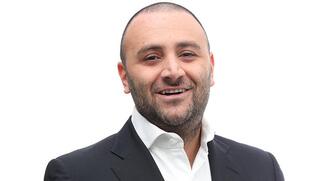The luxury goods company said founder Ippolita Rostagno will remain at the brand’s helm.
50 Jewelers/50 States: Utah
Seven Oaks Fine Jewelers shares how they create customer loyalty, and says their young bridal clients are looking for lab-grown diamonds.

St. George, Utah--In 50 Jewelers/50 States, National Jeweler interviews one retailer in each of the 50 U.S. states to find out how they are meeting the challenges of the changing retail environment.
Seven Oaks Fine Jewelers was named for the seven members of the Oaks family.
Owners Shane and Tricia have five children. The two eldest, a 21-year-old son and 20-year-old daughter, work for the family business, while the other three children help out on school breaks.
“My youngest daughter has been working there since she was probably eight years old. She’s 12 now,” said Shane. “She’ll walk up to people in the store and ask them, ‘What brings you in today, what’s the occasion?’ and talk to them and tell them about things, and the people kind of look at each other like, ‘Does this girl really know what she’s talking about?’ But she does. I tried to get an exception to sign her up with the GIA to get her diamond essentials certificate but she couldn’t because it’s an accredited school and she’s not of age.”
The Oaks opened their first store in Vernal, but ended up moving six hours south to St. George so their sons could pursue their passion for baseball (“That’s probably our family’s real love and passion,” Shane explained.)
At first, Shane made the long drive back and forth between the two cities at least once a week, but as the community in St. George got to know the Oaks, they were soon being asked to do lots of private sales.
“We got busy enough that I said, ‘You know, what we need to open a store here,’” said Shane.
Shane spoke with National Jeweler about his young bridal customers’ demand for lab-grown diamonds, how he creates an experience (hint: it involves drones), and shared his "secret" to business success.

National Jeweler: What’s the biggest challenge your stores are facing today?
Shane Oaks: I would say competing with online purchases still.
NJ: Do you have e-commerce?
SO: We do and then we don’t. The reason is we tend to battle a lot of fraudulent transactions. We do get a few
NJ: What’s the top-selling category and brand at your store?
SO: I would say, by far, Alex and Ani. We sell thousands of their bracelets.
Our second most popular category would be our custom-made engagement rings. We do everything from start to finish on site: the CAD/CAM, the casting, the finishing, the stone setting--we do it all right here.
Since we do it all it takes us five to 10 days from start to finish on rings, whereas for our competition it takes three to six or eight weeks because a lot of times they have to ship things out for casting to Chicago or L.A., Texas or New York. We have a definite advantage by being able to cast everything ourselves, even platinum.
We spend a lot of money on technology with 3-D growers, casting machines, things like that, but it helps us because our turnaround time is so much quicker than everyone else’s.
NJ: What’s the most popular style of engagement ring with your clientele now?
SO: I’d say a halo style ring is still the most popular and fancy shapes are coming back--pear shapes, ovals, marquises.
We sell a lot of platinum and a lot of yellow gold. Something we do that other jewelers may not is that we price out custom options. Once we re-render a ring (from a client’s initial inspiration) we calculate a price for 14-karat, 18-karat and platinum. We give them options with different diamond quality too, so we give them the ability to choose where they want to be within their budget. Surprisingly, a lot of people pick platinum.
We don’t promote one thing or another, we educate people by telling them the features and benefits and let them make the decision. Right now, our most popular diamond by far is a lab-grown. If you would have told me two years ago that my number one diamond would be a lab-grown diamond I would have told you you’re crazy, but it’s been popular for about a year.
About half of our clients are asking for them directly. And for the rest, just like with our metals, the way we present different options, we also provide options with moissanite and lab-grown diamonds and mined diamonds.
You need to understand something that is funky about Utah demographics: the rest of the country is getting married at 29 to 31 but Utah is a very conservative state full of a lot of members of the LDS faith, the Mormon Church. I’m LDS. Something that is really strict within our religion is abstaining from premarital sex, so these kids get home from an LDS mission and they’re not like the rest of the world; they get married, they start a family and they go to college to get their education. When they’re usually getting married they’re 20 or 21. They can’t afford the average $5,000 to $10,000 ring so really our rings are typically $1,500 to $3,500.
(At that range) you definitely have to give them options of a moissanite, a lab-grown or a mined diamond. Then you let them make decisions based on what they are confident in and their budget.
NJ: Can you describe your regional customer a bit more in terms of the gender breakdown?
SO: Across the board, 50 percent of the time it’s couples shopping for jewelry and 50 percent of the time it’s a lady or a man purchasing something.
The women are buying, the majority of the time, Alex and Ani and Pandora. The men are coming in and buying Alex and Ani or they’re buying birthday, anniversary gifts. We carry a line called Shy Creations and we do pretty well with that with the $200 to $2,000 range.
Again, lab-grown diamond earrings are popular for us. They’re completely affordable. You’re looking at G, VS quality diamonds, one carat each for somewhere in the realm of $6,000 to $8,000 for two carats total weight. You can’t even come close to that with a mined diamond.
For engagement rings I would say its 65 to 70 percent couples shopping and the rest of the time, it’s a man by himself.
NJ: Which social media accounts are important to your stores?
SO: Facebook is probably our most important but Instagram is slowly but surely passing that.
NJ: What’s the best piece of advice you’d offer to a fellow independent jeweler?
SO: If you’re not doing custom, you’d better start.
NJ: What’s a fun fact about you we can share with our readers?
SO: My biggest hobby is probably watching my kids succeed in whatever it is they may do, whether it be baseball or academics. My hobby is my kids.
NJ: I’ve heard you use drones in connection with your business. Can you tell me about that?
SO: After somebody commits to buying an engagement ring--I don’t use it as a tactic to sell them a ring, but after they’ve bought it--I’ll ask them how they’re going to propose. Sometimes they have a plan and sometimes they won’t, but I ask them if they would like to have their proposal on video. If they do, we set it up and we schedule a time.
My daughter now has gotten a really nice camera so she’ll hide and stay on ground level and I’ll be up with my drone but I try to stay far enough away that I don’t draw any attention with the noise. So as soon as I see the proposal happening is when I try to hurry and get in with the drone, and then my wife gets in and gets ground footage. Some of the proposals are on YouTube. We shoot it, we edit it and we give the couple a copy.
Usually at the proposal there are friends and family hiding. So you’re there, you’re part of this experience and you get to meet the friends, the family. You become part of this personal experience and it’s cool to see people get excited about something your company has made.
It’s hard in today’s world to build loyalty. Loyalty doesn’t really exist. But I’ll tell you my secret at how I look at my business. My passion isn’t diamonds, my passion isn’t gold. My passion is people. My passion is creating an experience and helping people create a story during this process that they can tell their friends that they’re proud of, that makes an experience that can’t be matched anywhere else.
That’s what jewelers don’t understand today. You can buy a ring anywhere. The number one jeweler in America (isn’t an independent jeweler). The only way you’re going to stay in business and differentiate yourself from the competition is to create an experience. People love stories. Facts tell, stories sell. That’s why you see people go to Antwerp and buy their diamonds. It’s not that you get a huge savings in diamonds, it’s that you can tell people, “I traveled halfway around the world to buy this diamond.”
I don’t care if someone buys a $100 Pandora charm or a $100,000 diamond engagement ring, we want everyone to leave our store feeling that they had the best experience ever purchasing something. You have to give customers something different.
The Latest

Laura Burdese, who joined the Italian luxury brand in 2022, will take on the role in July.

The National Jeweler editors revisit the most noteworthy industry happenings and design trends from 2025.

How Jewelers of America’s 20 Under 40 are leading to ensure a brighter future for the jewelry industry.

Need a gift for the cat lover who has everything? Look no further than our latest Piece of the Week.


It purchased the “Grosse Pièce,” an ultra-complicated Audemars Piguet pocket watch from the ‘20s, for a record-breaking price at Sotheby’s.

The lab-grown diamond grower now offers custom engagement and fashion jewelry through its Kira Custom Lab Jewelry service.

Roseco’s 704-page catalog showcases new lab-grown diamonds, findings, tools & more—available in print or interactive digital editions.

Chandler got his start at Michelson Jewelers and has served as DCA president and CEO since 2001. He will retire at the end of the month.

The boutique is slated to open this week inside Terminal 8, offering pre-owned Rolex watches and more to international travelers.
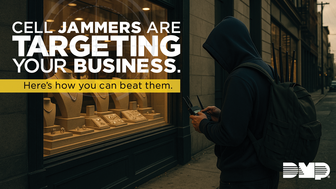
Sponsored by Digital Monitoring Products
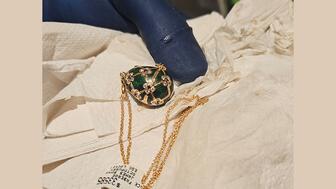
The special-edition egg pendant ingested in a New Zealand jewelry store was recovered after a six-day wait.
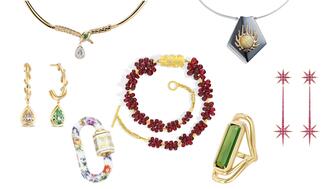
Associate Editor Natalie Francisco plays favorites with Piece of the Week, selecting a standout piece of jewelry from each month of 2025.

The “Love and Desire” campaign is inspired by the magic that follows when one’s heart leads the way, said the brand.

Two awardees will receive free tuition for an educational course at the Swiss lab, with flights and lodging included.

Berta de Pablos-Barbier will replace Alexander Lacik at the start of January, two months earlier than expected.
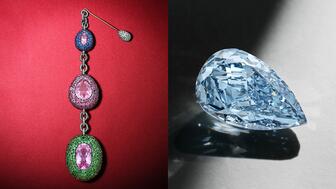
Sotheby’s held its first two jewelry sales at the Breuer building last week, and they totaled nearly $44 million.

Winners will receive free registration and lodging for its fourth annual event in Detroit.

Here are six ideas for making more engaging content for Instagram Reels and TikTok, courtesy of Duvall O’Steen and Jen Cullen Williams.

The honorees include a notable jewelry brand, an industry veteran, and an independent retailer.

Carlos Jose Hernandez and Joshua Zuazo were sentenced to life without the possibility of parole in the 2024 murder of Hussein “Sam” Murray.

Yood will serve alongside Eduard Stefanescu, the sustainability manager for C.Hafner, a precious metals refiner in Germany.
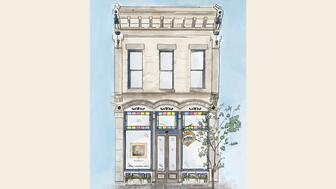
The New Orleans jeweler is also hosting pop-up jewelry boutiques in New York City and Dallas.

Set in a Tiffany & Co. necklace, it sold for $4.2 million, the highest price and price per carat paid for a Paraíba tourmaline at auction.
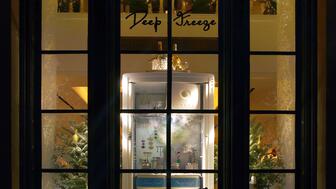
The jeweler’s “Deep Freeze” display showcases its iconic jewelry designs frozen in a vintage icebox.
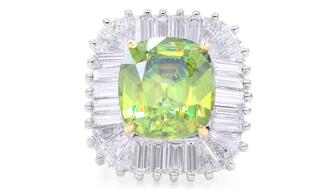
Take luxury gifting to new heights this holiday season with the jeweler’s showstopping 12-carat sphene ring.

This year's theme is “Unveiling the Depths of the Ocean.”







